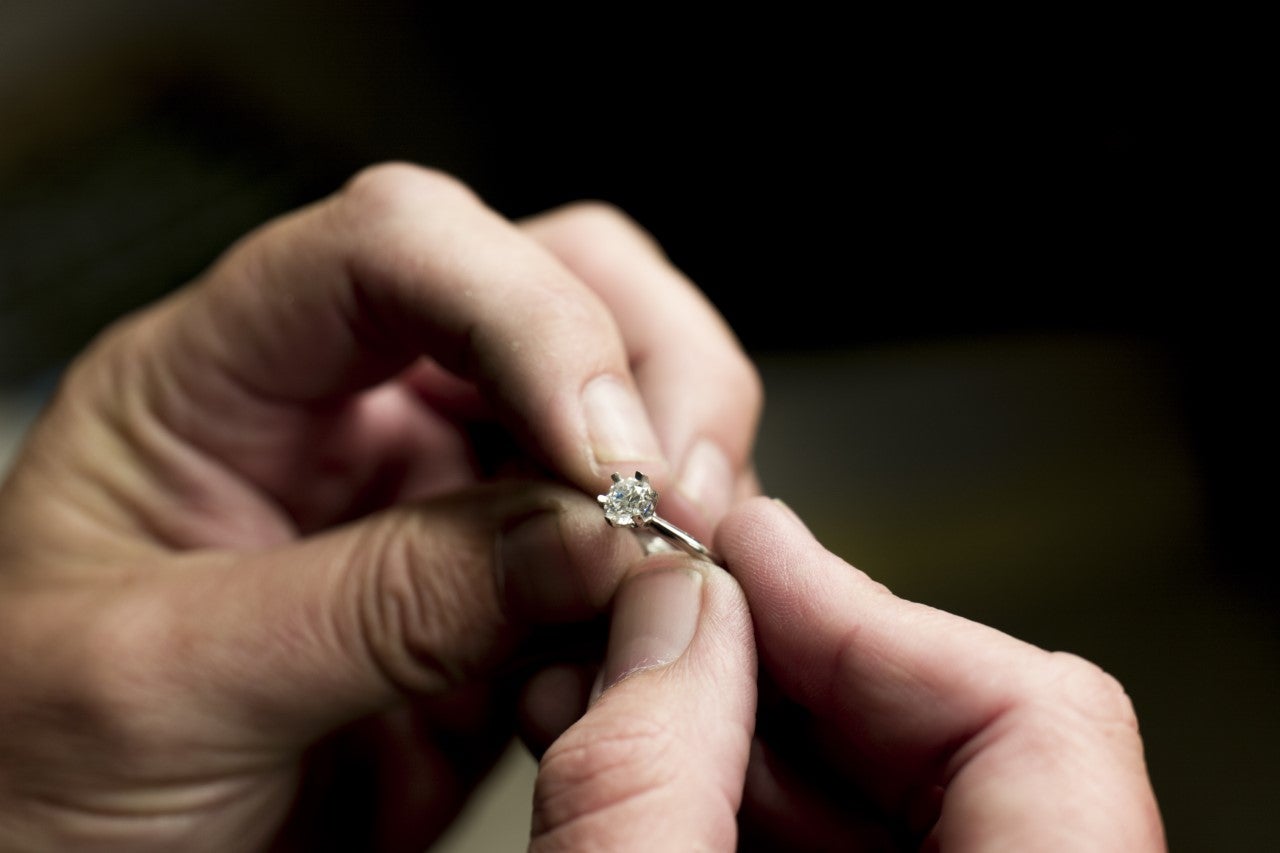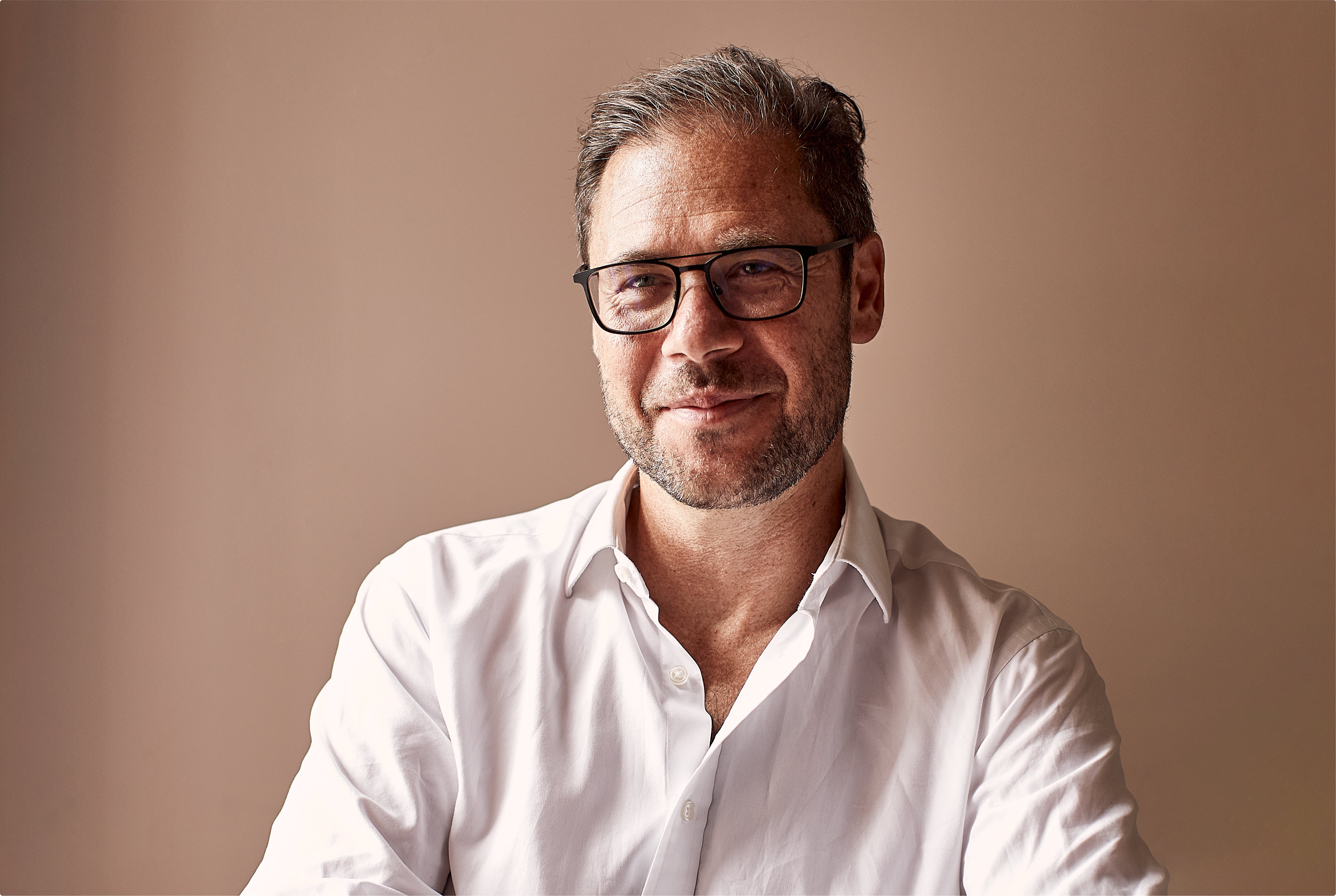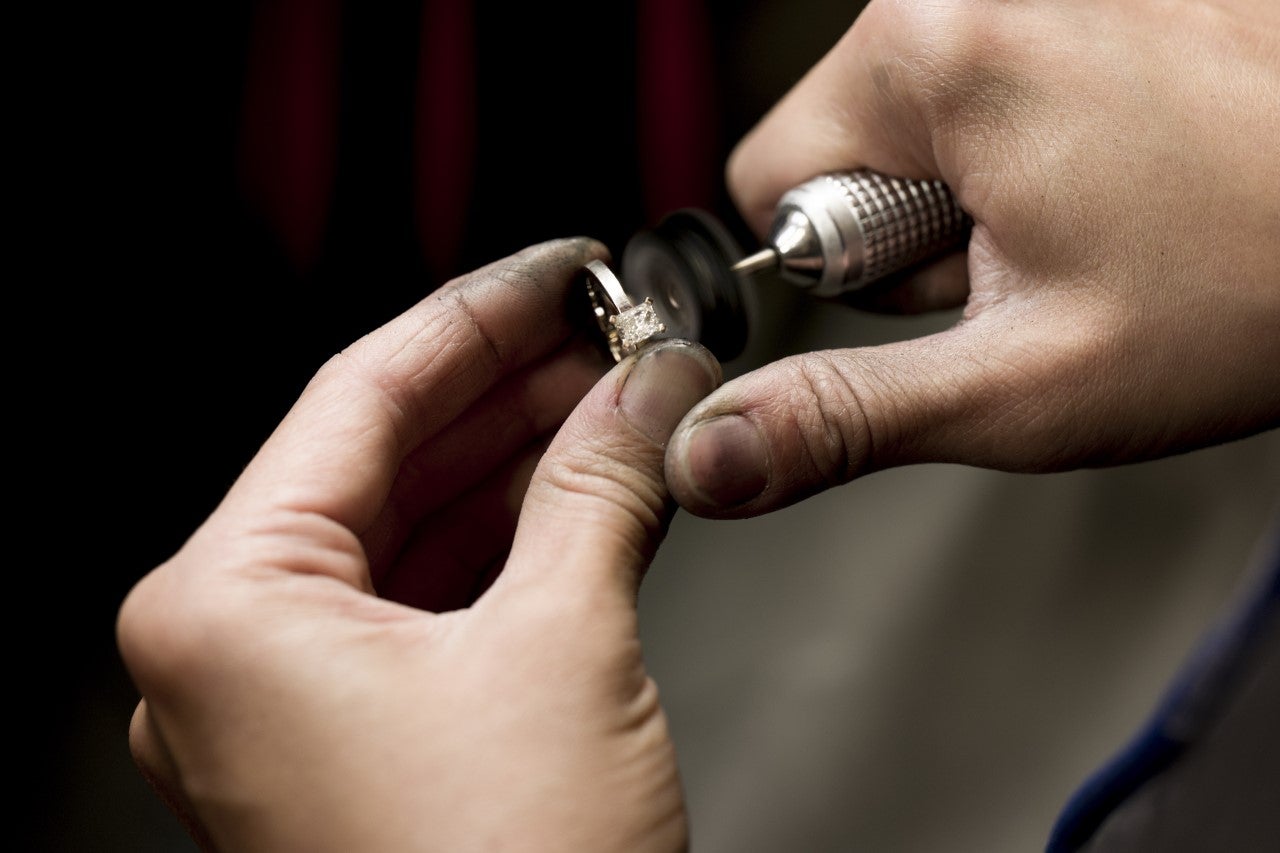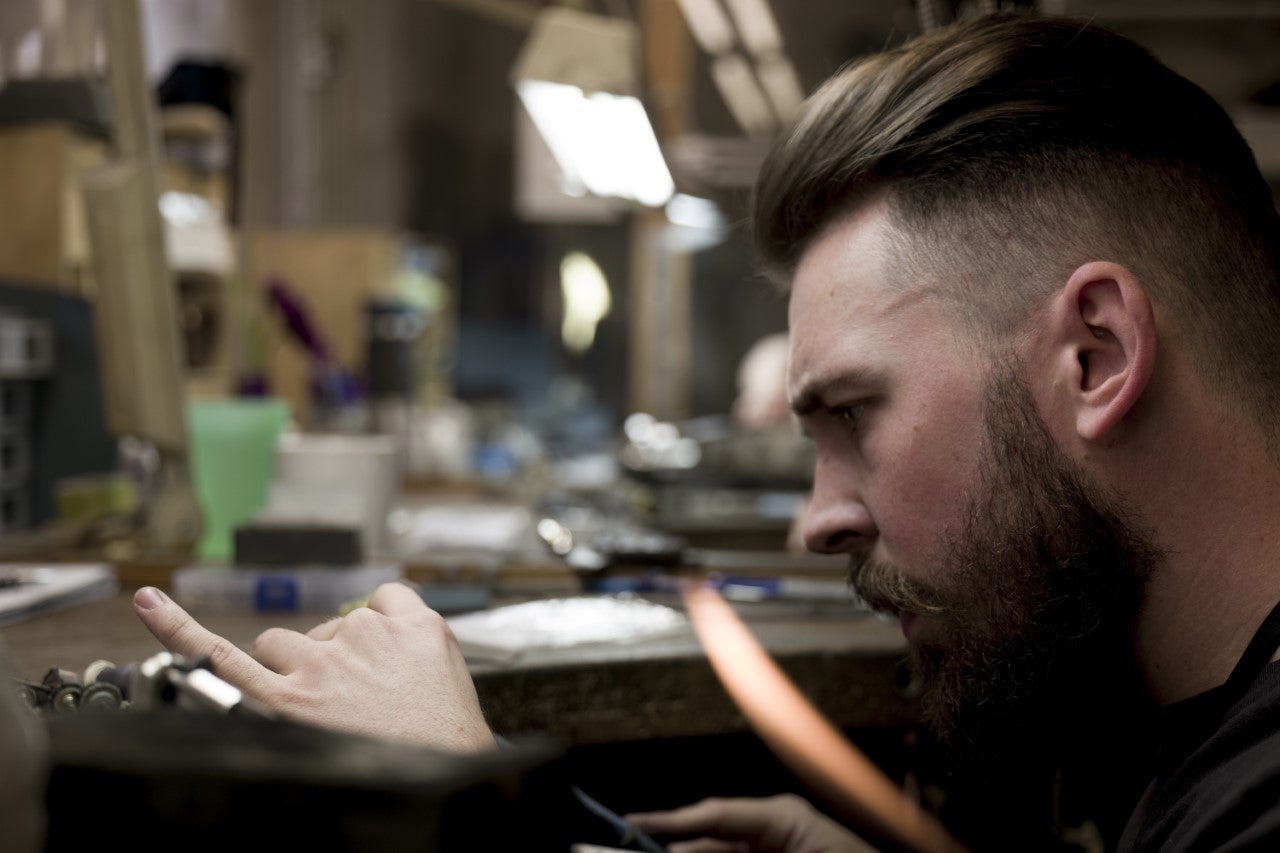77 Diamonds: The modern version of Tiffany?
Unlike stores on the high street, 77 Diamonds are giving people direct access to the global diamond market, Tobias Kormind tells Heather Martin


What happens when your little sister marries into a family of diamond cutters? Your best friend gets engaged and asks you to source the diamond. Then another friend comes calling, then a friend of a friend. Word gets out: there’s a diamond connection.
This is the story of Tobias Kormind, Danish co-founder of Mayfair’s 77 Diamonds, so named for 1477, the year in which Archduke Maximilian proposed to Mary of Burgundy with what is reputed to be the very first diamond engagement ring.
Naturally, Kormind fell in love too – “Head over heels” – with diamonds. Passion thrills through his voice as he speaks. “We’re talking primordial,” he says, “so when the earth was still being formed, three billion years ago. Which is why it’s so crazy. These are gifts from nature. You get hooked, watching people react to seeing them glisten in their hands.”
Kormind aspires to become a modern version of Tiffany. He already had an eye for luxury, having gone straight from a Law degree at UCL into investment banking. After five years in mergers and acquisitions at Morgan Stanley and a stint with the technology team at Credit Suisse, he joined financial portal Interactive Investor, before leaving to set up an online marketing agency handling accounts from the Estée Lauder Group through Anya Hindmarch to Crème de la Mer. Which is where, in 2005, the concept for 77 Diamonds was born: “In 2008, while 77 Diamonds was still in its infancy, I bought it out as I could see great potential.” When Kormind heard the siren call, he was ready to surrender. He put all his savings into his fledgling business. Everything he has built up since is from internally generated profit. Turnover in 2021 was almost £40m.
Banking was “a lot of fun, but you’re flying at 20,000 feet, so far away from the real”. Diamonds were definitely real. But it was people who lured him back down to earth. For all the romance on the customer side, there was a whole lot more in production. When they created their own workshop in 2012, the first new craftsman they brought in was Dean. “He was the best we’d seen by a mile. We’d worked with ten different setters prior to Dean [at that stage they were outsourcing almost everything], and it’s like you find a gold nugget: we were looking at his setting, and everything was symmetrical, perfect – you just don’t get that.” Kormind takes me on a tour of the workshop, and for all the seductive beauty of the stones, it is the craftsmen that entrance me most.
Dean is in fact the last person I meet, up on the third level. He grew up in Hatton Garden, and trained there straight out of school. “I used to see the workshops and think, that looks fascinating,” he says. “I used to hear the ‘bang bang bang bang’ all the time I was out round the streets. When I left school and went to the job centre, I saw an advertisement and that was it.” He’s been in the business 34 years, and with Kormind for 10.
Whereas he could produce maybe a couple of castings in a day, it’s the advent of 3D printing that has enabled Kormind to scale up production and realise his vision of affordable luxury
Working alongside Dean in setting is 24-year-old Jess. “She’s good,” Dean says, proudly. When Jess tells me she’s an apprentice I ask how long she’s been there. “Seven years,” she replies. She still regards herself as a novice, and waited three years just to make it out of the office. Jess had done a Level 2 course in jewellery manufacture straight after GCSEs, at what was then Holts, now the British Academy of Jewellery, and has since completed a Level 3 course as well. Hatton Garden was part of her childhood too – her father still works there as a stone supplier, dealing in rubies and sapphires. “It’s a family thing,” she says brightly. “But I always knew I wanted to make and be more creative.” Her younger sister makes mountings in a workshop on Bond Street.
I watch as Jess preps the setting for an earring. She has music playing and chats freely as she works. It doesn’t perceptibly slow her down. First she secures the ring in a wooden clamp, and opens up the claws slightly before picking up the stone with a tool dipped in beeswax and positioning it carefully in the setting, pushing it down gently to gauge whether the claws will fit snugly. She selects what she tells me is a ball fraze to scoop out a tiny bit of metal so the stone sits more securely, then pushes the claws down firmly, clips the ends so they are flush with the table of the stone, and uses a cup fraze to produce a rounded finish to each one. The white-gold dust is collected into a leather “skin” slung beneath her work bench and will be sent elsewhere to be melted back down into metal. It takes her about 30 minutes to set a pair of earrings. She says, self-deprecatingly, “Dean can do it much faster.”
Down one floor I meet Tarun, in “production flow”, whose team use a digital production board to track the whereabouts of every item of jewellery on its journey from mounting to dispatch and monitor key performance indicators along the way. He’s been with the company since 2011. He tells me how the workshop used to be occupied by master craftsman Steve Barnard and his apprentice, Sam, and how the two of them had stayed on when 77 Diamonds took over the premises. Barnard retired four years ago, but by then, Kormind says, the apprentice was already “the driving force”. “Sam’s always been attentive to detail, really driven, really focused,” Tarun adds, “and you could see that from the very beginning”. The respect is palpable. Sam is clearly the one in charge.

Sam is just 33 years old, but he’s already an old hand, having been in the trade – and the building – for 16 years. He was first introduced to Barnard by a cousin who ran a jewellery shop in Oxford. “I came for six months to see if I could use the tools, and my hands, and to see if I liked it or not.” He loved it, and was good at it too. “I’d done a bit of jewellery in A-Level Art, but the only tools I’d used were woodworking tools, nothing as intricate as this.” In his first-floor section of the workshop they specialise in casting clean-ups and assembly. “Basically, we’re preparing the rings for setting.” I get the impression it’s a little more than that, as if Sam acts as the guarantor of traditional quality in an increasingly modern world. There’s a steadiness about him, and a hint of Jack Grealish.
Kormind explains how casting is outsourced to Birmingham, to a couple of big factories in the city’s legendary jewellery quarter. “They’re old places that have stood the test of time, but it’s very recent technology. We produce the design, and they print it out on a big expensive machine, then pour the molten metal into the mould. The investment you need for that, and the health and safety around it, is enormous.” The parts are then returned to Sam, who disassembles, cleans and reassembles the mounting as required. “He ensures the rings are symmetrical and robust – without him, they could fall apart.”
Sam shows me a raw casting in (unrecognisable) white gold, with the sprue for feeding in the molten metal still attached, and talks me through the cleaning process. He begins by using files to “true up the shape” and take off the “casting skin”, which has the (relatively) rough texture of orange peel. Gradually, the colour of the metal is revealed. “As you work through the different grades of emery paper, it will start to change colour, and get shinier and shinier and shinier, then once you’ve gone through all the paper grades, finer and finer and finer, you start with the polishing, with different-sized mops and a range of compounds. The final stage is what Kristina does, with more mops and more compounds.” Kristina is working with a 0.5 horsepower machine to polish the metal to a brilliant shine and remove any residue around engravings: “You have to be very present, very focused.” She is perhaps the newest member of the team, but already runs her own jewellery business on the side, having studied in Barcelona and her native Lithuania.

About 60 per cent of 77 Diamond’s business comes from engagement rings (they have about 3 to 4 per cent of the UK market), but they also produce earrings, pendants, bracelets – anything except watches. Chains are bought in from Italy and Germany.
Sam misses the days when he was entrusted with making everything from scratch, but “it all boils down to price and cost”. Whereas he could produce maybe a couple of castings in a day, it’s the advent of 3D printing that has enabled Kormind to scale up production and realise his vision of affordable luxury. Delicate restorations and repairs are still hand done though. Sam believes that “the apprenticeship thing is dying out a little”, but he concedes that the old skills are still being passed on at specialist colleges and The Goldsmiths’ Centre.
Kormind is confident they strike the right balance between new and old. “You can’t mass-manufacture with machines,” he says. “Or rather you can, but the end product doesn’t look the same and doesn’t last the same. As regards symmetry and durability, the difference is night and day.” Beyond the initial casting, each 77 Diamond piece is processed entirely by hand, receiving the dedicated attention of experts using largely traditional tools, though Sam points out a state-of-the-art welding machine that can shoot a laser into a localised area of 0.2mm. “The standard is way above industry average,” Kormind says. Returns are for resizing, or “if she says no”; very few involve repairs.
“Unlike stores on the High Street, we are giving people direct access to the global diamond market,” he says. The online model not only saves on overheads, and allows clients to commission bespoke designs, but builds resilience too: the cost-conscious, value-based approach to luxury means business can thrive even when times are hard.

The company has over 100 employees, with about 15 based in the workshop. It has a showroom in Germany, and plans to open a further three this year, in Stockholm, Paris and Milan. Back at headquarters on London’s Hanover Square, discreetly busy with couples coming and going, I ask Kormind where his diamonds come from. By way of answer he gives me a potted history. “Originally, diamonds were discovered in India around the 4th century BC. Small quantities were also discovered in Brazil in the 1700s but it wasn’t until 1866, when a 21-carat diamond was found in South Africa, that the real diamond rush started.” In the 1980s, mines were discovered in Siberia, and then, on the same latitude, in Canada, but today, “just under 40 per cent of diamonds come from South Africa”. It takes five to seven years to get a new mine on stream, so at any one time “we know more or less what the supply and demand equation looks like”.
The discovery of the big South African mines initially flooded the market, and prices dropped massively because until then diamonds had been so scarce. Which is when Cecil Rhodes started buying up the cut-price land, which is how he built De Beers. When Rhodes died, De Beers was bought by the Oppenheimer family, who had distribution in London, and though they eventually sold out to Anglo American, who already owned 50 per cent, their influence remains defining. “They’re the ones who created the marketing slogan ‘diamonds are forever’ in the 1930s and 40s,” says Kormind. “That changed the direction of everything.” Kormind’s co-founder, Vadim Weinig, comes from a family of diamond merchants in Antwerp. It’s a business that seems to run on connections.
Kormind explains how manufacturers (like his in-laws) buy the rough on speculation, then maximise the cut to get as much diamond out of it as possible. It’s a complicated calculation, because they need to turn over the diamonds quickly. Bigger isn’t always better. If they produce something that has 80 per cent yield but that nobody wants, they’ll be stuck with it: they have to balance what they cut out of the diamond, and how much wastage there is, with demand in the market. The 530-carat Cullinan I in the Queen’s sceptre was the biggest diamond to be cut from the biggest ever rough, a 3,106-carat stone that proved unsaleable until it was split into nine major stones (and countless smaller ones). The Cullinan II is mounted in the Imperial State Crown.
Kormind gets his business acumen from his father, who used to drag the young Tobias to meetings with him all round the world. But he’s always been creative with his hands. “My mum’s got sculptures all over her house of stuff that I used to make in clay. I never learned to make the jewellery, but I worked with the CAD specialists in the early days.” He’s even designed some of the company’s bestsellers.
These days he collects coloured diamonds, not only for the sheer joy of it, but also as a nest egg for his children and grandchildren. His favourites are rose pinks, from the Argyle mine in the East Kimberley region of remote northwestern Australia. “These rare stones are like works of art,” he says (he collects a few of those, too). The fact that the mine has recently closed, with Rio Tinto – already mired in scandal due to its careless destruction of indigenous artefacts in the Pilbara – returning the land to its ancestral owners, makes them rarer still.
Like he said, you get hooked.
Join our commenting forum
Join thought-provoking conversations, follow other Independent readers and see their replies
Comments



Bookmark popover
Removed from bookmarks